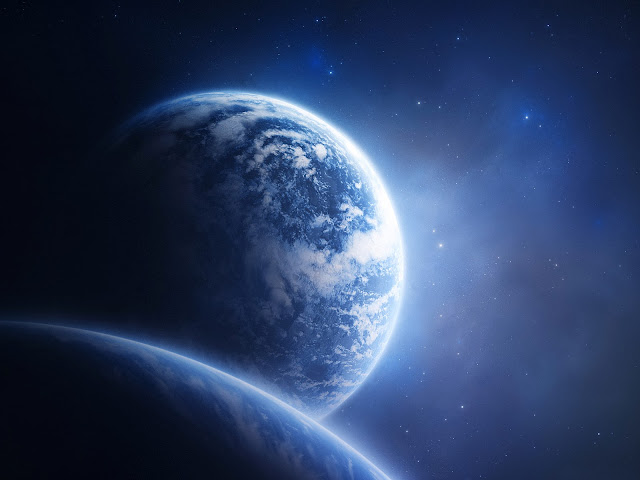Rainbow of Colors Reveal Asteroid Vesta as More Like a Planet:

'Rainbow-Colored Palette' of Southern Hemisphere of Asteroid Vesta from NASA's Dawn Orbiter
This mosaic uses color data obtained by the framing camera aboard NASA's Dawn spacecraft and shows Vesta's southern hemisphere in false color, centered on the Rheasilvia impact basin, about 290 miles (467 kilometers) in diameter with a central mound reaching about 14 miles (23 kilometers) high. The black hole in the middle is data that have been omitted due to the angle between the sun, Vesta and the spacecraft. The green areas suggest the presence of the iron-rich mineral pyroxene or large-sized particles.
Credit: NASA/JPL-Caltech/UCLA/MPS/DLR/IDA
The giant Asteroid Vesta is among the most colorful bodies in our entire solar system and it appears to be much more like a terrestrial planet than a mere asteroid, say scientists deciphering stunning new images and measurements of Vesta received from NASA’s revolutionary Dawn spacecraft. The space probe only recently began circling about the huge asteroid in July after a four year interplanetary journey.
Vesta is a heavily battered and rugged world that’s littered with craters and mysterious grooves and troughs. It is the second most massive object in the Asteroid Belt and formed at nearly the same time as the Solar System some 4.5 Billion years ago.
“The framing cameras show Vesta is one of the most colorful objects in the solar system,” said mission scientist Vishnu Reddy of the Max Planck Institute for Solar System Research in Katlenburg-Lindau, Germany. “Vesta is unlike any other asteroid we have visited so far.”(...)
Read the rest of Rainbow of Colors Reveal Asteroid Vesta as More Like a Planet (989 words)
© Ken Kremer for Universe Today, 2011. |
Permalink |
6 comments |
Add to
del.icio.us
Post tags: 1 Ceres, 4 vesta, Asteroids, Dawn Asteroid Orbiter, Dawn mission, HED meteorites, ion propulsion, ion propulsion system, Main Asteroid Belt, Meteorites
Feed enhanced by Better Feed from Ozh
































